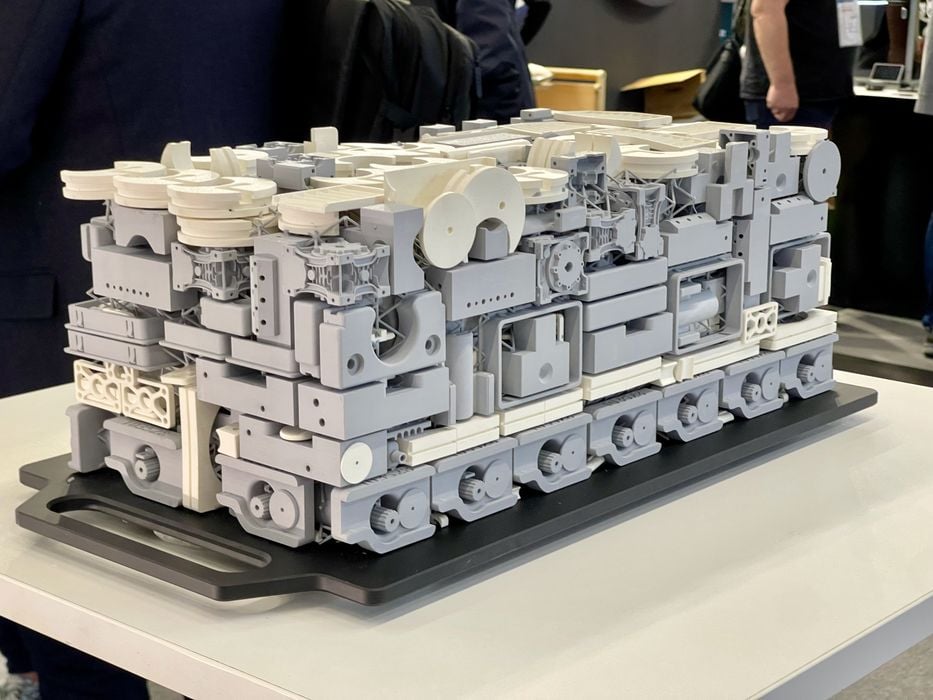
Although there are many niche additive technologies, ISO/ASTM 52900:2021 provides a basic classification for the 7 most common types of 3D printing.
In its decades-long history, 3D printing technology has evolved along a variety of paths using different materials and processes. This can make it difficult to keep track of even the most popular (and practically useful) 3D printing technologies, especially with all the acronyms involved. Is that new machine SLA or SLS? What’s the difference?
Fortunately, the ISO/ASTM 52900:2021 standard provides a starting point for any engineer looking to brush up on their additive manufacturing (AM) knowledge. Here are the seven AM process categories it lists, encompassing the majority of 3D printing technologies used today.
1) Binder jetting
The binder jetting process involves selectively depositing a binding agent onto progressive layers of powder. Powdered materials include polymers, ceramics and metals. While binder jetting is fast and scalable, the mechanical properties of parts made with binder jetting tend to vary by post-processing technique. Some of the largest providers of binder jetting systems today include Desktop Metal, ExOne and Voxeljet.
2) Directed energy deposition (DED)
Also known as laser-engineered net shaping (LENS) or direct metal deposition (DMD), directed energy deposition focuses thermal energy to melt and deposit material onto a substrate, one layer at a time. Useful for producing large parts with complex geometries, DED is most often applied to metals but also works with ceramics and composites. Commercially available DED systems include Optomec’s Lens 3D printers, DMG Mori’s Lasertec Series and Trumpf’s TruPrint Series.
3) Material extrusion
More commonly known as fused filament fabrication (FFF) or fused deposition modeling (FDM), material extrusion involves selectively dispensing material through a nozzle or orifice. It’s widely used for prototyping and rapid tooling due to its low cost and ease of use. While there are many commercially available extrusion 3D printers, Ultimaker, Prusa and LulzBot are all well-established suppliers with good reputations for engineering applications.
4) Material jetting
Similar to inkjet printing, this process selectively deposits droplets of a feedstock material, such as photopolymer resins or wax. In the former case, the materials are cured using ultraviolet light at each layer. One advantage of material jetting is that it allows for simultaneous deposition of multiple materials, enabling the creation of multicolor or multi-material parts. Stratasys, 3D Systems and Mimaki each offer material jetting systems capable of multicolor, multi-material 3D prints.
5) Powder bed fusion (PBF)
In powder bed fusion a laser or electron beam selectively fuses regions of a powder bed. The process requires a controlled environment, typically involving the use of argon or nitrogen to prevent oxidation of metal powders. Within the broader category of PBF, there are several more specific techniques, such as selective laser sintering (SLS) and selective laser melting (SLM). Commercially available PBF 3D printers include the EOS M 290 and Renishaw’s RenAM 500 series.
6) Sheet lamination
Sheet lamination involves bonding thin sheets of material to form parts. This means that, rather than using a filament, powder or liquid feedstock, sheet lamination uses pre-cut sheets of material, typically paper, plastic or metal, 100-500 microns thick. The bonding techniques used to adhere the layers include chemical adhesion, thermal bonding and ultrasonic welding. Sheet lamination has the advantages of being low cost and easy to use but its parts tend to have low resolution and mechanical strength. Examples of sheet lamination 3D printers include the Mcor ARKe and Fabrisonic’s SonicLayer machines.
Read the rest of this story at ENGINEERING.com
